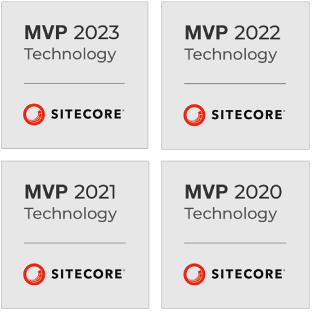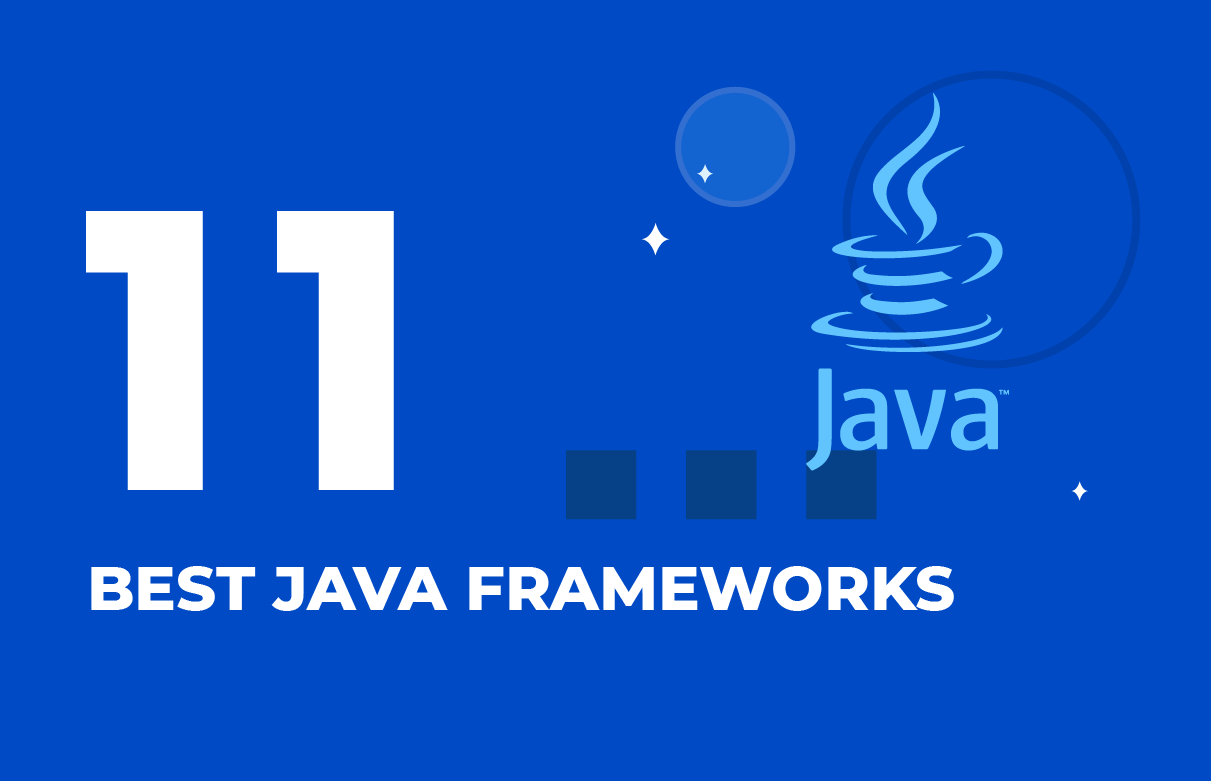As your business expands, managing it solely with manual efforts becomes increasingly challenging. Powerful enterprise apps can help align your company’s processes, ensuring smooth operations even as you grow. However, developing enterprise apps isn’t like creating an average app.
It involves handling extensive databases, integrating with various systems, and addressing critical security concerns. In this guide, we’ll break down the process of creating enterprise-level apps step by step. Discover how to build enterprise software, explore the various types you can implement, learn about must-have features, and understand the benefits they offer.
What Is Enterprise Software?
Enterprise software is a specialized application designed to fulfill the unique needs of large organizations and businesses. Unlike off-the-shelf software, enterprise software is highly customizable and scalable, tailored to streamline complex business processes across various departments, such as finance, human resources, and customer relationship management.
Need Expert Enterprise Software Development?
Our custom solutions simplify your workflows and foster business innovation.
These software solutions often integrate with existing systems and databases, facilitating effective data management, analysis, and collaboration on a large scale. Enterprise software development services empower organizations to optimize efficiency, enhance productivity, and gain valuable insights into their operations, ultimately driving growth optimization in today’s competitive business landscape.
Benefits of Enterprise Software

Improved efficiency and productivity
Enterprise software solutions streamline operations, reduce manual tasks, and enable employees to focus on value-added activities. Automation of routine processes boosts productivity, allowing organizations to accomplish more with fewer resources.
Streamlined business processes
The implementation of enterprise software leads to the optimization of business processes. Centralizing data and standardizing workflows eliminate redundancies and inefficiencies, ensuring smoother operations and faster decision-making.
Enhanced data security and compliance
Enterprise software solutions prioritize data security and compliance with industry regulations. Robust security measures, including encryption and access controls, safeguard sensitive information, mitigating the risk of data breaches and ensuring regulatory compliance.
Better decision-making through data insights
Data analytics capabilities embedded within enterprise software empower organizations to make informed decisions. By analyzing data trends and patterns, businesses gain valuable insights into market dynamics, customer behavior, and operational performance, enabling strategic decision-making for sustainable growth.
Scalability and flexibility for business growth
Enterprise software solutions offer scalability and flexibility to accommodate evolving business needs. Whether expanding operations or adapting to market changes, organizations can scale resources up or down seamlessly, ensuring agility and resilience in an uncertain environment.
Must-Have Features of Enterprise Software

Robust user authentication and access control
Robust user authentication mechanisms, coupled with meticulous access control protocols, safeguard sensitive corporate data against unauthorized access. Advanced encryption techniques and multi-factor authentication mechanisms fortify the system against potential cyber threats, ensuring the integrity and confidentiality of corporate information.
User experience (UX) design for enterprise applications
A seamless and intuitive user experience is imperative for enhancing productivity and user adoption within the corporate ecosystem. Intuitive navigation, visually appealing interfaces, and personalized dashboards optimize user engagement and facilitate effortless interaction with the software platform, thereby fostering a conducive work environment.
Comprehensive data management and integration capabilities
Enterprises operate within a vast ecosystem of interconnected data streams. A robust enterprise software solution must offer comprehensive data management functionalities, enabling efficient storage, retrieval, and manipulation of diverse data sets. Furthermore, seamless integration with third-party applications facilitates interoperability and data exchange, enhancing operational efficiency and decision-making capabilities.
Scalability and high-performance architecture
Scalable architecture empowers organizations to accommodate growing user bases and escalating data volumes without compromising system performance or responsiveness. High-performance architecture, characterized by optimized resource utilization and efficient data processing algorithms, ensures the swift execution of critical business processes.
Advanced reporting and analytics
Actionable insights derived from comprehensive reporting and analytics tools empower organizations to make informed decisions and drive strategic initiatives. Advanced reporting functionalities, coupled with sophisticated data visualization techniques, enable stakeholders to glean valuable insights from complex data sets, facilitating data-driven decisions and performance optimization.
Seamless mobile accessibility and cross-platform support
With the proliferation of mobile devices and remote work arrangements, seamless mobile accessibility is vital for modern enterprise software solutions. Cross-platform compatibility ensures ubiquitous access to critical business functionalities across diverse devices and operating systems, empowering users to remain productive regardless of their location or device preferences.
Types of Enterprise Software

Enterprise Resource Planning (ERP)
In the fast-paced and complex business environment, manual processes and disparate data management systems can hinder growth and efficiency boost. ERP software emerges as a comprehensive solution, creating a centralized database accessible to all departments within an organization. This centralized system ensures that any data added or updated is reflected across the entire organization, fostering consistency and accuracy.
ERP software comprises various modules designed to manage different aspects of business processes seamlessly. These modules include inventory management, accounting, business process management, order management, customer service, and human resources. For companies of all sizes, ERP solutions like SAP ERP, Microsoft Dynamics 365, and Oracle NetSuite offer unparalleled capabilities to optimize and integrate internal processes.
One of the key advantages of ERP is its ability to eliminate redundant and inefficient technologies, providing a unified platform for departments to share information effortlessly. Whether it’s planning, cost control, sales, marketing, or inventory management, ERP streamlines operations, leading to improved efficiency, reduced errors, and enhanced overall productivity.
Customer Relationship Management (CRM)
Effective customer relationship management is central to business success, and CRM software plays a pivotal role in achieving this. CRM solutions provide a detailed view of customer relationships, empowering customer service representatives to carry out their responsibilities more efficiently. Key functionalities of CRM software include order management, lead tracking, client communications, status tracking, and coordination of advertising campaigns.
CRM software, exemplified by industry leaders such as Zoho, Hubspot, and Salesforce, enables businesses to generate more leads, market new services, and foster cross-selling opportunities. By offering real-time reporting and visualization features, CRM systems provide valuable insights into customer behavior, allowing businesses to enhance the customer experience. Automation of sales funnel activities further contributes to increased efficiency and improved customer support services.
Human Resources Management (HRM)
The complexities of human resources management grow exponentially as organizations expand. HRM software becomes indispensable for automating essential HR tasks, including recruitment, payroll, performance management, resource planning, reporting, and employee training. Renowned HRM solutions from providers like Workday, SAP, Ultimate Software, and Oracle empower HR departments to navigate these complexities seamlessly.
HRM software streamlines processes, allowing HR professionals to focus on strategic initiatives and employee engagement rather than administrative tasks. Through automation, these solutions enhance accuracy in payroll processing, improve recruitment efficiency, and ensure compliance with regulations. As a result, organizations can build a strong and motivated workforce while optimizing HR processes for long-term success.
Business Intelligence (BI)
In the era of big data, businesses need effective tools to analyze and derive actionable insights. BI software becomes a crucial asset, enabling companies to analyze data collected from various sources and make informed decisions based on trends and patterns. Using technologies like data mining and advanced algorithms, BI software explores data, providing graphical representations through dashboards and downloadable reports.
Notable BI solutions such as Sisence, Tableau, and MicroStrategy empower businesses to gain a competitive advantage by turning raw data into meaningful insights. These insights enable strategic decision-making, allowing companies to respond proactively to market trends, customer behaviors, and emerging opportunities. The visualization capabilities of BI software make complex data easily understandable, facilitating collaboration and communication across departments.
Supply Chain Management (SCM)
In the interconnected world of manufacturing and logistics, efficient supply chain management is critical. SCM software plays a vital role in managing the orderly process from manufacturing to storage, shipping, and final product delivery. The software streamlines activities, maximizes customer value, and provides a competitive advantage in the marketplace.
SCM solutions, when integrated into business operations, facilitate market forecasting, logistics, supply quest, commodity transportation, and overall inventory control. Businesses benefit from streamlined processes, reduced costs, and faster product delivery to consumers. SCM software ensures that the flow of goods and services remains efficient and economical, safeguarding businesses against financial losses and maintaining a positive reputation in the market.
Custom Enterprise Software
In addition to off-the-shelf development solutions, custom enterprise software stands out as a powerful option for businesses with unique industry-specific requirements. Tailored to specific needs, custom software development ensures that every aspect of an organization’s processes is addressed effectively. Whether it’s industry-specific nuances, complex workflows, or integration with existing systems, custom business solutions provide unparalleled flexibility.
While off-the-shelf solutions offer a solid foundation, custom enterprise software elevates organizational efficiency, agility, and competitiveness to new heights, reflecting the true essence of innovation. The imperative features when building custom enterprise apps include accommodating extensive databases, implementing role-based access control, enabling third-party integrations, incorporating real-time analytics, and facilitating instant messaging.
Digital Experience Platforms (DXP)
Digital Experience Platforms (DXP) offer a comprehensive suite of tools to craft immersive digital experiences. At their core, DXPs integrate content management, analytics, personalization, and commerce functionalities into a unified ecosystem. They empower businesses to create seamless customer journeys across various touchpoints, from web and mobile to IoT devices.
DXPs leverage AI and machine learning to glean insights from user interactions, enabling dynamic content delivery and personalized experiences at scale. With robust security features and scalability, DXPs cater to the evolving needs of modern enterprises, fostering innovation and securing a competitive edge. DXPs enable organizations to remain agile, responsive, and maintain a customer-centric approach.
Enterprise Software Development Life Cycle
Planning
The foundation of any successful enterprise software project lies in meticulous planning. Before you build enterprise applications, you should prepare a comprehensive blueprint that outlines project plans, schedules, cost estimations, and software requirements. Project managers collaborate with stakeholders to define project objectives, identify potential risks, and establish realistic timelines. A well-defined project plan serves as a roadmap for the development team and ensures alignment with organizational goals.
Requirements gathering and analysis
In this stage, project requirements are systematically gathered, documented, and analyzed. Stakeholder engagement is critical to ensure that all relevant stakeholders’ perspectives are captured and integrated into the software solution. Various techniques such as analyzing existing software, conducting user sessions, and collecting user feedback through surveys are employed to elicit comprehensive requirements. A formal requirements document is prepared, serving as a reference for the subsequent stages of the SDLC.
System design and architecture planning
With the requirements in hand, the focus shifts towards designing the system architecture and defining the software’s overall structure. Architects and designers collaborate to create a scalable, robust, and maintainable software architecture that aligns with the project requirements and objectives. Design considerations include selecting appropriate technologies, programming languages, frameworks, and database solutions. Prototyping techniques are utilized to validate design concepts and gather feedback from stakeholders.
Development and coding
Armed with a clear design blueprint, the development team embarks on the coding phase, where they translate the design specifications into functional software components. Agile development methodologies such as Scrum or Kanban may be employed to facilitate iterative development cycles and foster collaboration among team members. Continuous integration practices ensure that code changes are seamlessly integrated into the software repository, promoting code quality and stability.
Testing and quality assurance
The testing phase is paramount to ensure the reliability, performance, and security of the enterprise software solution. Various testing techniques such as unit testing, integration testing, performance testing, and security testing are employed to identify and rectify defects and vulnerabilities. Quality assurance engineers meticulously evaluate the software against predefined acceptance criteria, ensuring that it meets the specified requirements and standards.
Continuous integration and deployment
In today’s fast-paced business environment, continuous integration and deployment practices are essential for accelerating the software delivery process. Automated deployment tools streamline the deployment process, enabling seamless rollout of new software releases to production environments. Continuous integration pipelines facilitate automated testing, code review, and deployment, ensuring that software changes are promptly validated and delivered to end-users.
Post-launch maintenance and support
The launch of the enterprise software marks the beginning of its lifecycle, requiring ongoing maintenance and support to ensure its smooth operation. A dedicated support team monitors the software’s performance, addresses user queries and issues, and provides timely updates and patches. Change request management processes facilitate the prioritization and implementation of new features, enhancements, and bug fixes based on user feedback and evolving business needs.
Cost of Building Enterprise Software
The cost of building enterprise software varies based on factors like complexity, features, and development approach. In general, it may range from tens of thousands to millions of dollars. Initial planning, requirements gathering, and design phases incur costs, followed by development, testing, and deployment. Maintenance and support also contribute to long-term expenses. To make a more specific estimate of your project cost, consult our team.
Why Choose SaM Solutions for Enterprise Software Development?
Choose SaM Solutions for your enterprise software development needs because we do more than just build enterprise software — we craft solutions tailored to your unique business requirements. We understand that your enterprise deserves more than a generic off-the-shelf solution. With a focus on innovation and customization, we deliver software that not only meets but exceeds your expectations.
Our team of experienced developers combines technical expertise with creativity to bring your vision to life. We prioritize collaboration and communication, ensuring your involvement at every step of the development process. Contact us for a truly unique and transformative enterprise software experience that drives your business forward.
Conclusion
Developing enterprise software applications is a dynamic process that hinges on understanding users’ real needs and aligning product features accordingly. At SaM Solutions, we prioritize customer-centric design and tailor enterprise solutions to meet your specific business requirements. There’s no one-size-fits-all approach to enterprise app development — it’s about assessing your needs and following best practices. Contact us today to kick-start your next enterprise software project and experience the transformative power of tailored solutions.






























 5 Reasons Why Your Business Needs a Mobile eCommerce Application
5 Reasons Why Your Business Needs a Mobile eCommerce Application Using Salesforce to Improve Your Sales Pipeline: Five Tips
Using Salesforce to Improve Your Sales Pipeline: Five Tips Cross-Platform Mobile Development: Five Best Frameworks
Cross-Platform Mobile Development: Five Best Frameworks 10 Best Web Development Frameworks in 2024
10 Best Web Development Frameworks in 2024 How to Develop Custom Accounting Software
How to Develop Custom Accounting Software














 Why React and Node.js Are the Top Technologies for Creating High-Performance Web Apps in 2024
Why React and Node.js Are the Top Technologies for Creating High-Performance Web Apps in 2024 10 Best IoT Platforms for 2024
10 Best IoT Platforms for 2024 Top 20 Latest Trends in the Ecommerce Industry in 2024
Top 20 Latest Trends in the Ecommerce Industry in 2024 Top 10 Most Popular Programming Languages in 2024
Top 10 Most Popular Programming Languages in 2024